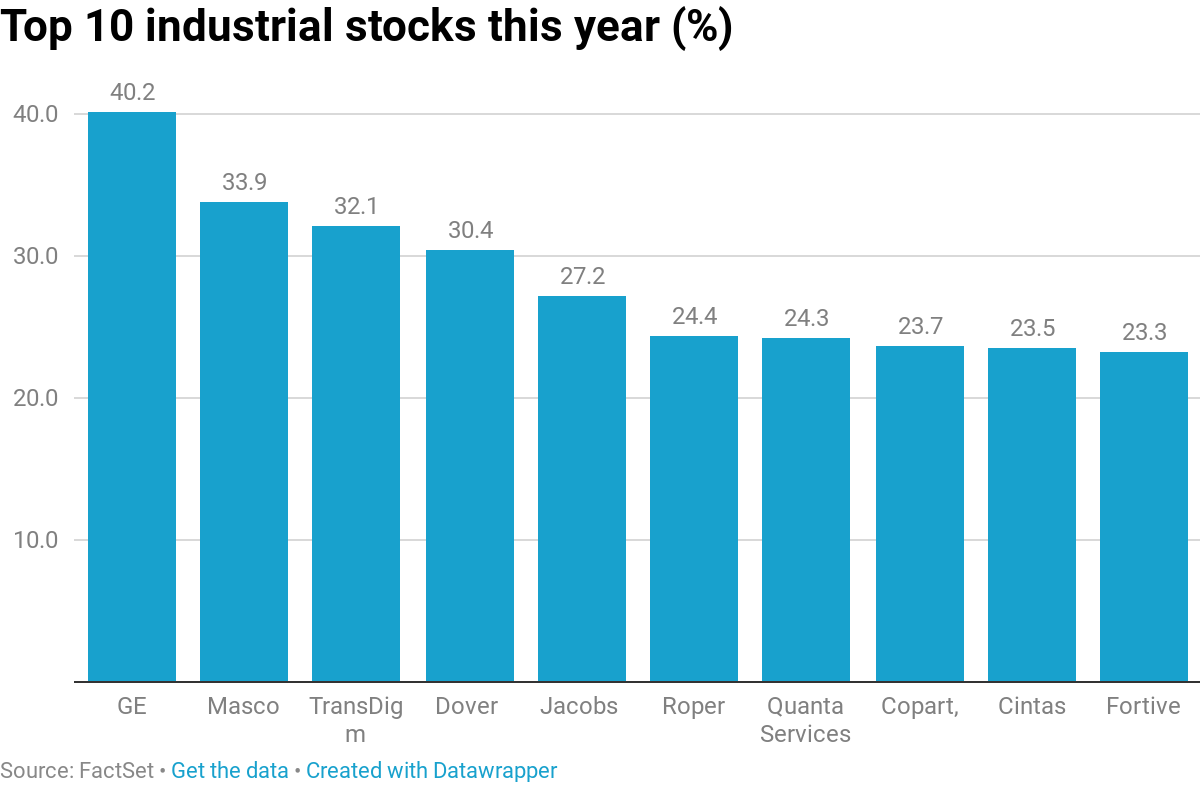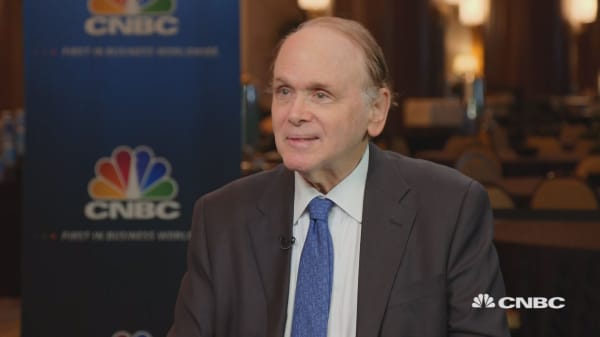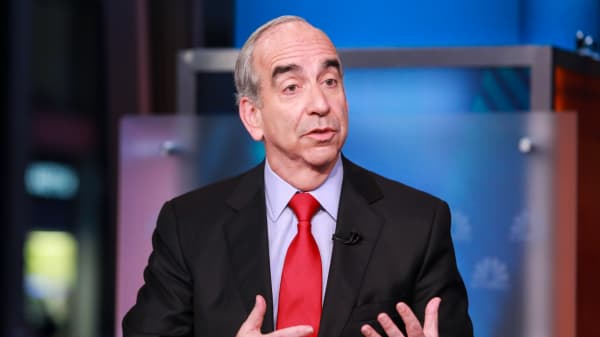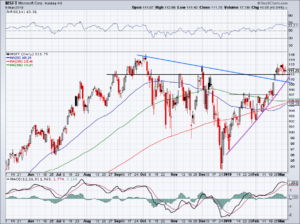
Image source: The Motley Fool.
Flexion Therapeutics Inc (NASDAQ:FLXN)Q4 2018 Earnings Conference CallFeb. 28, 2019, 4:30 p.m. ET
Contents: Prepared Remarks Questions and Answers Call Participants Prepared Remarks:
Operator
Good afternoon, ladies and gentlemen, and welcome to the Flexion Therapeutics Conference Call. My name is Latif, and I will be your coordinator today. At this time, all participants are in a listen-only mode. We will be facilitating a question-and-answer session at the end of today's call. (Operator Instructions)
I'll now turn the call over to the company.
Scott Young -- Vice President of Corporate Communications & Investor Relations
Good afternoon. This is Scott Young Vice President for Corporate Communications and Investor Relations. Both the earnings release we issued this afternoon and an archive of this conference call can be found on the Company's website at flexiontherapeutics.com.
Today's call will be led by Flexion's Chief Executive Officer, Dr. Michael Clayman; and he is joined by Dan Deardorf, Senior Vice President of Commercial Operations; and David Arkowitz, Flexion's Chief Financial Officer.
On today's teleconference, we will be making forward-looking statements that include commercial, financial, clinical and regulatory projections. Statements relating to future financial or business performance, conditions or strategies and other business matters, including expectations regarding net sales, operating expenses, cash utilization, clinical, regulatory and commercial developments and anticipated milestones are forward-looking statements within the meaning of the Private Securities Litigation Reform Act.
Flexion cautions that these forward-looking statements are subject to various assumptions, risks and uncertainties, which change over time. Additional information on the factors and risks that could affect Flexion's business, financial conditions and results of operations are contained in Flexion's Form 10-K for the ended December 31, 2018, filed with the SEC today, and other filings, which are available at www.sec.gov, as well as Flexion's website. These forward-looking statements speak only as of the date of this call, and Flexion assumes no duty to update such statements.
I will now turn the call over to Flexion's CEO, Mike Clayman.
Mike Clayman -- Chief Executive Officer & Co-Founder
Thanks, Scott, and thank you all for joining our fourth quarter and full year 2018 earnings call. Today, we'll provide an update on ZILRETTA's launch and our commercial progress, review our clinical development and lifecycle management activities and discuss our financial performance in the fourth quarter and full year 2018. We will then open up the call for Q&A.
To begin, in early January of this year, we held a conference call on which we discussed ZILRETTA's 2018 performance in detail. On that teleconference, I described the factors that made 2018 a foundational year for ZILRETTA and we were very pleased with its performance in the market. As reported today, we recorded full year product revenue of $22.5 million, which is a very solid start for our novel buy and bill product entering the orthopedic space.
Importantly, we established a strong base to build upon as we execute the next phase of our commercial strategy, which we believe will result in building sales momentum throughout the course of 2019 and beyond. In that vein, on our last call, we also provided estimated 2019's ZILRETTA revenue guidance of $65 million to $80 million. As we discussed in January, we believe that ZILRETTA's dedicated J code J3304 is essential to the long-term success of the product and we have tremendous confidence that ZILRETTA will become an impactful product for the treatment of OA knee pain.
However, the introduction of the J code should not be seen as flipping of a switch, rather it gives prescribers additional confidence that they will be reimbursed swiftly and with a defined reimbursement amount. And critically it enables us to now access a meaningful number of accounts, which were previously closed due to the absence of a J code. While still early days, we can report that we have already seen the J code open doors to some major accounts, which conduct thousands of our intra-articular injections each year and have the potential to make sizable purchases.
That said, it is important to understand that those practices are now just beginning the adoption process, a process that includes clinical, reimbursement and operational adoption. This process varies from practice to practice and can be remarkably complex, taking weeks or often months before ZILRETTA is fully accessible to patients.
That's why we have an outstanding team of field sales reps known as musculoskeletal business managers or MDMs and also field access managers who are deeply knowledgeable reimbursement experts. Reflecting our Company values, these professionals are focused, innovative and tenacious, as they walk prescribers and key decision-makers through each step. As for ZILRETTA's clinical performance, we could not be more pleased with the beneficial impact its having on patients confronting OA knee pain. I am routinely contacted by patients, physicians, colleagues and even investors, who have experienced ZILRETTA firsthand and want to share their stories about the impact it has had on them. They often use the words like amazing and unbelievable, which are heartfelt and moving to all of us at Flexion.
These stories serve as a poignant reminder of just how many people suffer from this incurable disease and how large of the potential market is for ZILRETTA. Each year physicians and physician extenders administer approximately 8 million intra-articular injections for knee OA, and we believe that ZILRETTA has the potential to be a first-line treatment for many of these patients. Dan will share more details, but we have been busy executing our commercial plans to support our long-term goal of making ZILRETTA the leading branded intra-articular product for OA knee pain in the U.S. And to this end, we have also been diligently working to optimize the product label.
Specifically, as I mentioned on the last call, we submitted a supplemental NDA with compelling data from our repeat administration trial in December. The data indicated that repeat administration of ZILRETTA for treatment of OA knee pain was generally safe and well tolerated with no deleterious impact on cartilage or joint structure observed through x-ray analysis. The data also indicate that the magnitude and duration of pain relief experienced by patients after both the first and second injections was consistent with the clinical benefit of ZILRETTA in the pivotal Phase 3 trial.
The goal of the sNDA is to revise the product label and remove the limitation of used statement that currently exists. And just this week, we received the Day 74 letter from FDA informing us that they've accepted the sNDA and we have a PDUFA date of October 14, 2019. Additionally, in February, the agency informed us that the labeling supplement we filed in August had an interim step to address the LOU has been subsumed into the sNDA. While we clearly would have preferred a quicker decision on the labeling supplement, we remain optimistic about the eventual FDA decision.
While we do not expect to have the agency's decision on the sNDA until the fourth quarter, we are very pleased that the results from the repeat administration trial were published in the peer-reviewed medical journal, Rheumatology and Therapy. With this publication, our MDMs can proactively provide the reprint to prescribers, our market access team can proactively share the data with payers and our Medical Science Liaisons or MSLs and medical information experts can address any questions about the data and repeat administration.
While OA knee pain presents the largest opportunity for ZILRETTA, we believe the product holds great potential in other indications, including hip and shoulder OA pain and adhesive capsulitis also known as frozen shoulder. As we previously reported, in December, we enrolled a first patient in a double-blind, placebo-controlled Phase 3b trial to evaluate the safety and efficacy of ZILRETTA in patients with hip OA. The initiation of that trial was supported by findings from a Phase 2 randomized, open-label, pharmacokinetic study in the shoulder and hip joints, known as the SHIP study in which ZILRETTA appeared generally safe and well tolerated, and the PK profile of ZILRETTA observed in both joints was consistent with previous PK studies in the knee. We expect the hip OA trial to complete in 2020. And we intend to initiate Phase 2 studies in shoulder OA and adhesive capsulitis later this year.
Finally, with respect to FX201, our intra-articular gene therapy product candidate. We previously announced that GLP toxicology studies were initiated in October 2018 and pending positive results from these preclinical studies we anticipate filing an Investigational New Drug application and initiating first-in-human clinical trials in the second half of 2019. Additionally, on February 11, 2019, the Company received a notice of allowance from the U.S. Patent and Trademark Office for a U.S. patent application covering FX201 and we look forward to the issuance of the patent, which will provide protection to 2033 without any extensions.
In summary, across all areas of Flexion, our teams are doing outstanding work to make a meaningful difference in the lives of the patients we serve, while maximizing value for our shareholders, and without their support, we simply could not advance our important mission.
I'll now turn it over to Dan.
Dan Deardorf -- Senior Vice President, Commercial
Thanks, Mike. To begin, I'd like to stress just how pleased we are with the progress our commercial team is making across multiple dimensions, prescriber awareness and clinical interest, market access of physician reimbursement support and patient awareness and demand. I'll touch on each of these as I walk through the usual launch metrics.
For context, we have been reporting a set of metrics since launch to provide our investors and analysts with a better sense of how this launch is advancing in the absence of reliable script data from the usual third-party sources. By the end of 2018, our Musculoskeletal Business Managers and Field Access Managers had conducted product preparation training or held in-depth reimbursement discussions at 88% of our approximate 3,700 target accounts. As a reminder, we view this as a key leading indicator since it indicates an account has a serious clinical interest in using the product. Correspondingly, as of December 31st, 90% of our target accounts had either purchased or received samples of ZILRETTA since launch. Furthermore, by the end of the fourth quarter, 69% of ordering accounts have placed at least one reorder for additional product since we launched ZILRETTA.
With respect to reimbursement, at the end of the third quarter, I mentioned that we had already had interactions with commercial payers covering the vast majority of patients in the country. So not surprisingly that metric was essentially unchanged in the fourth quarter. In total, our market access team has engaged with 48 key commercial insurers, who represent 225 million people or 75% of all commercially covered lives in the U.S. We continue to monitor all other targeted plans and we will engage them as appropriate.
Additionally, the commercial insurance coverage for ZILRETTA continue to be strong throughout the fourth quarter, with more than 95% of benefits verifications processed through FlexForward, indicating coverage of ZILRETTA. While these last two metrics gave important insights early on, we recognize that they are providing limited value at this stage. Going forward, we will stop reporting these until we are identifying new metrics which we believe will provide deeper insights into how the launch is progressing.
With respect to our marketing efforts, our comprehensive multipronged direct-to-patient strategy continue to build momentum throughout the fourth quarter of 2018 and the first two months of 2019. Our digital presence is driving traffic to zilretta.com and that volume has exceeded our expectations. Additionally, we recently launched a physician locator to help patients identify doctors in their area who offer ZILRETTA in their practice. In advanced of unveiling that we invited physician practices with ZILRETTA experience to add their information to a database and it's fair to say that we've been very pleased with the response.
By their nature, orthopedists tend to be highly competitive and seeing another local practice on the physician finder can serve us an institutional motivator to adopt ZILRETTA. Importantly, the physician finder was activated concurrent with our direct-to-patient television ad pilot which kicked off for January this year.
As a reminder, our TV pilot is a targeted and cost-efficient campaign with a total expense of under $1 million. The sponsor currently running in three test markets that are match the three control markets which mirror the demographics of the test markets. This pilot will run for several months and as is the case with television ads, it takes some time to see potential uplift. This is especially true with viable products since patients need to see the ads, take action to go to the website, find a physician, make an appointment and ultimately to get treated.
As a result, we won't have a deep understanding of the ROI on this initiative until the second half. However, that said, we are seeing a significant initial lift in web traffic from the test markets which give us an early belief that the TV ads may already be having an impact in activating patients to seek more information about ZILRETTA online.
With that, I'll wrap up my comments by saying that we are very pleased with our progress in 2018, and we're excited about executing our commercial plans in 2019.
I'll now turn it over to David.
David Arkowitz -- Chief Financial Officer
Thanks, Dan. I'll briefly review the financial results for full year 2018, which we included in the press release we issued this afternoon and in our 10-K. We reported a net loss of $169.7 million for full year 2018 as compared to a net loss of $137.5 million for full year 2017. Net sales of ZILRETTA in the fourth quarter of 2018 were $9.5 million and the total for full year 2018 was $22.5 million, while the cost of sales for full year 2018 was $7.3 million. The full year net sales reflect a gross-to-net reduction of 9%, which is consistent with our gross-to-net percentage reductions reported in the first, second and third quarters of 2018.
The gross-to-net reduction is primarily comprised of distributor fees, returns reserve and mandatory government discounts and rebates, such as Medicaid 340B institutions, Veterans Administration and Department of Defense. As we don't provide any customer rebates or discounts, we expect our gross-to-net percentage reduction to be in the low teens over the ensuing quarters.
Research and development expenses were $53.1 million and $51.2 million for the years ended December 31, 2018 and 2017, respectively. The increase in research and development expenses of $1.8 million in 2018 as compared to 2017 was primarily due to an increase in salary and other employee-related costs for additional headcount stock-based compensation expense and an increase in expenses related to our pipeline program and other program costs, partially offset by a decrease in ZILRETTA clinical development expenses.
Selling general and administrative expenses were $121.3 million and $78.8 million for the years ended December 31, 2018 and 2017, respectively. Selling expenses were $87.3 million and $45.9 million for the years ended December 31, 2018 and 2017, respectively. The $41.4 million increase in selling expenses was primarily due to salary and other employee-related costs associated with additional headcount and costs related to the establishment of commercial marketing and sales capabilities.
General and administrative expenses were $34 million and $32.9 million for the years ended December 31, 2018 and 2017 respectively, which represents an increase of $1.1 million year-over-year.
Interest expense was $15.7 million and $11.3 million for the years ended December 31, 2018 and 2017, respectively. As of December 31, 2018, the Company had approximately $258.8 million in cash equivalents and marketable securities compared with $423.9 million as of December 31, 2017.
We believe that our current cash balance with the expected future sales of ZILRETTA and the ongoing prudent management of our expenses will bring us to profitability. We expect that our operating expenses will continue to increase primarily driven by commercial activities in support of ZILRETTA, line extension clinical trials for ZILRETTA in OA of the hip and shoulder continued development of FX201 and preclinical and development activities associated with future additions to the pipeline.
At this point, I would ask the operator to please open the line for questions.
Questions and Answers:
Operator
(Operator Instructions) Our first question comes from the line of David Maris of Wells Fargo.
David Maris -- Wells Fargo Securities -- Analyst
Great. Thank you for taking the question. It might seem like an odd question, but I do so two things. First, any contemplation of partnering ex-U.S. and where that might stand? And then separately, when you think of your comments about -- you couldn't be more pleased with how things are going and things are great, was that in contemplation of the quarter that just ended, or now that were two months into the -- does that still stand for where we are today?
Mike Clayman -- Chief Executive Officer & Co-Founder
So, David, we are, as we said all along, we are open to partnerships outside the U.S. We are actively exploring. And if and when we proceed with the partnership, we will certainly be sure that you're among the first to know. As it relates to the comments about being pleased with progress that is through 2018, we are not commenting on how we're doing in 2019 and that will be the subject of our Q1 earnings call.
David Maris -- Wells Fargo Securities -- Analyst
All right. Thank you very much.
Operator
Our next question comes from Randall Stanicky of RBC Capital Markets.
Randall Stanicky -- RBC Capital Markets -- Analyst
Great, thanks. Mike, two questions. Can you just maybe elaborate any early observations in terms of how or what impact if any of the J code is having? Are you seeing an increase in reorder rates or size of orders? Is there anything even though it's early that you could provide that could give us some color around that? That's number one.
And the number two do you have a sense of what percent of your patience or the patients taking ZILRETTA are getting repeat doses of ZILRETTA? And where do you think that goes once the sNDA is approved?
Mike Clayman -- Chief Executive Officer & Co-Founder
Yes. So regarding the J code, Randall, what we're gratified by is the number of examples of practices, some large group practices for which the J code has opened the door, a door previously close to us and that now allows us to be in the process of getting on formularies. So as we said in our prepared comments, it's not like flipping a switch. It's certainly directionally it instills confidence, greater confidence for those who are ordering that the reimbursement process will be that much more straightforward. I think that particular upside of the J code will play out in the course of the year.
In terms of repeat dose, as we've said before, the LOU does some confusion among clinicians out there, particularly as it relates to the possibility of reimbursement. And this is a top of mind issue for us. The reality is that reimbursement is straightforward for the vast majority of patients, who do get a second or third or fourth dosing. We have know -- we know of many patients who have gotten repeat doses and practices being appropriately reimbursed. But it's still something to work through. And I have no doubt that removal of the LOU will contribute to the momentum that we have for this product.
Randall Stanicky -- RBC Capital Markets -- Analyst
Great. Thank you.
Mike Clayman -- Chief Executive Officer & Co-Founder
Thank you.
Operator
Our next question comes from Gary Nachman of BMO Capital Markets. Your question please.
Gary Nachman -- BMO Capital Markets -- Analyst
Hi, good afternoon, guys. To the large physician practices that have consolidated and were a bit of a hurdle for you last year, have you been improving penetration of these accounts? Are you opening doors there with the J code? And have you seen that having a repeat dose data published? Is that helping with payers yet?
Mike Clayman -- Chief Executive Officer & Co-Founder
Yeah, with respect to large practices, Gary, we're clearly continuing to make progress there. On an ongoing basis, we are having formulary wins, we are getting access. In fact, this is of all sizes. All target practices of ours, but certainly some large practices. So we continue to see wins on an ongoing basis and will continue to do so. The second part of her question was.
David Arkowitz -- Chief Financial Officer
Repeat data.
Gary Nachman -- BMO Capital Markets -- Analyst
Yeah. The repeat -- having it published, are you seeing that benefit yet when you have conversations with payers? I know it's early, but...
Dan Deardorf -- Senior Vice President, Commercial
Yeah. It's frankly just too early. I mean, we're at a week or so into it. We will -- but we will be very aggressively disseminating and discussing that data with payers moving forward.
Mike Clayman -- Chief Executive Officer & Co-Founder
Yeah. I mean, as you know, Gary, we can proactively discuss the data with payers. And we will be doing that and we're certainly optimistic that that will have a positive impact.
Gary Nachman -- BMO Capital Markets -- Analyst
Okay. And then last question Just how much of the diabetic angle has been resonating with physicians? We hear that a lot in our conversations. And I know last year was a little bit back and forth in terms of how much of a benefit you thought that was. So what's the latest on that?
Mike Clayman -- Chief Executive Officer & Co-Founder
Yeah. It's clearly a patient type or a patient population that has could receive a differential benefit from a safety perspective with ZILRETTA. So that's certainly an important patient type if you will that physicians that migrate toward. That said, we're interested in all patients. We're interested in the week and weary so to speak. The patient who is toward the end of their disease has run out of option. So those are all patients for us, but the diabetic patient certainly an important one, certainly one that our representatives utilize to open the door in many accounts to get some patients started to be treated and then expand the usage of the patient types beyond there.
We don't have a hard data since this is a viable product. We do not get patient-specific data to be able to tie it to diabetic patients. But if you were to ask me based on what I've heard anecdotally speaking with physicians and our sales reps, I would say, we've got somewhat disproportionate use of ZILRETTA to patients, but very difficult to quantify.
Gary Nachman -- BMO Capital Markets -- Analyst
Okay, thanks.
Operator
Your next question comes from Elliot Wilbur of Raymond James.
Elliot Wilbur -- Raymond James and Associates -- Analyst
Good afternoon. Maybe just start with a couple of financial questions for David. I guess, with respect to trends in SG&A and in R&D. SG&A can just sort of tick lower each quarter over the course of 2018. R&D continued to move incrementally higher each quarter. And I guess sort of given the plans in place for 2019 how should we be thinking about those measures on an aggregate basis? And then should we be thinking about sort of SG& A continuing to move lower or moves higher, essentially same pattern we saw in 2018?
And then also on gross margin, which has continued to move up with volume, but assuming in fact you do reach kind of the low end or midpoint of your 2019 revenue guidance, where would gross margins be at? I guess, my assumption it would be in excess of 80% but maybe I'm not so sure that kind of pace in the last couple of quarters.
David Arkowitz -- Chief Financial Officer
Great. Elliot, yeah, this is David. So let me take the operating expense question first. And let me break it into three buckets: R&D, selling expenses and then G&A and give a little color on each of those. So as we look forward for R&D expenses, we do expect those to continue to increase as we're conducting additional clinical trials for ZILRETTA, specifically the hip and the shoulder OA trials. We're going to be conducting further preclinical and clinical development activities for our portfolio, including FX201. So that's that will be increasing.
For the selling expenses, the S part of the SG&A, think about that in two pieces: the first piece is our sales and marketing personnel and their related costs. That's piece one. And the second piece is the external marketing spend. The sales and marketing personnel piece, that should grow nominally as we're basically rightsized from a personnel standpoint. And that piece currently is a little bit more than half of our total selling expense. The external marketing piece that's going to be increasing for a variety of reasons. We've got campaigns -- marketing campaigns that we introduced in 2018 that we're going to see annualization of those in '19. We're going to introduce new campaigns in 2019. Then we've also got some spend-related activities that will grow hand in hand with sales growth. So you're going to see, again, you're going to see some growth on the marketing external marketing expense side of things. And then finally, G&A. We really expect that to just grow increase minimally in the future. We're kind of rightsized as it relates to the G&A piece as well.
So let me now answer your question on the gross margin. So, yeah, as you indicated gross margin has ticked up over the last several quarters. In 2018, gross margin percentage was 78% in Q4 of '18 and you're going to see it continue to improve over time. We're not in a position at this point just given that we're still relatively early from a production standpoint and reaching steady-state to give you specific numbers. But once we achieve steady state, we feel very confident that we're going to see a gross margin percentage in the 90% range.
Elliot Wilbur -- Raymond James and Associates -- Analyst
Okay. And just one follow-up question for Dan, and maybe Mike as well. So if you think about the pattern of use or pattern of prescribing among your -- among current utilizers of the product, I mean is it possible to characterize it in terms of you're seeing use your limit use by a large number of physicians, who are kind of slowly, but surely adopting the product and maybe reimburse with sort of the hurdle to more widespread use? Or is this a situation where some of the thought leaders and the high prescribers have kind of really gotten behind the product and are accounting for the majority of volume and then go ultimately sort of kind of lead the way in terms of driving additional utilization?
Dan Deardorf -- Senior Vice President, Commercial
Yeah. I think, thanks Elliot. I'll probably start by saying that across all of our accounts, even in our largest accounts, we're just beginning to scratch the surface with respect to the potential in these accounts. In a number of these accounts -- larger accounts it's generally there are a few physicians within the Group that have kind of taken it on to be the initial users to gain the experience on behalf of the Group and to take that experience back to their peers. So at this point in time, we still have a great opportunity from a breadth perspective, breadth within accounts as well as across accounts and then ultimately a lot of room to grow on the depth front within any given clinician's practice and within any given practice more broadly.
Elliot Wilbur -- Raymond James and Associates -- Analyst
All right. Thanks for taking the questions.
Dan Deardorf -- Senior Vice President, Commercial
Thanks Elliot.
Operator
Our next question comes from the line of Patrick Trucchio of Berenberg Capital Management. Your line is open.
Patrick Trucchio -- Berenberg Capital Markets -- Analyst
Thanks. Hey, good afternoon. I have a follow-up regarding the sNDA under revision for ZILRETTA label. It is an either or situation and that either you will get the labeling supplement or you will get the label to allow for repeat administration or you would get neither? And then can you provide us some context regarding discussions around this sNDA, in particular the data requirements for the filing and your level of confidence that the filing meets the agency's requirements for the label change?
Mike Clayman -- Chief Executive Officer & Co-Founder
Yeah. So, Patrick, let me start with an answer to the second part of the question. We take some degree of confidence and comfort in the Day 74 letter, which the agency -- in which the agency indicates their support for the filing, specifically that they've seen no major deficiencies. And frankly, if they were design issues that's the kind of thing that should come out in Day 74 letter as potential a review issue and that there was no such commentary.
So we are proceeding with confidence that these data should prove reassuring to the agency and provide a basis for removing the LOU and the not intended for repeat administration phrase. Having said that, it's impossible to predict exactly where the agency is going to go. We do believe that data provide a compelling logic for removal of the LOU in this language, but that's in front of us. And the agency can figure out a lot of different ways to proceed. The most obvious straightforward and rational way to proceed here is to remove the LOU and to remove the language about not intended for repeat administration.
Patrick Trucchio -- Berenberg Capital Markets -- Analyst
So then just a follow-up on the Phase 3 hip study. Just want to make sure I understand the design of the study. The primary in the study is the change in the WOMAC-A pain score, which I believe is different from the primary and the knee study the average daily pain score. So it looks like the dosage is the same as for knee 32 milligram, yeah. So I'm wondering were the findings from the PK study were informed the dosage being used in this Phase 3 study for the hip or how that dosage was decided on?
And then secondly, can you discuss the choice to change the primary for the hip study in terms of one discussions with the agency and then two, how clinicians view WOMAC-A pain score endpoint in hip OA?
Mike Clayman -- Chief Executive Officer & Co-Founder
Yeah. So the dose in hip was determined with a couple of considerations in mind. Really, probably the most commonly used dose of KENALOG in hip is 40 milligram. So there's a parallel construction. There are some positions use AD, but we started there. And we also kind of made a pharmacologic argument that said, the side the actual a volume of the hip joint is very comparable to the volume of the knee joint. And if in fact, what we want to do is a fact a therapeutic concentration of drug over time, you can make a reasonably straightforward argument about doing that in the same volume joint. So we thought for a couple of reasons. The 32 milligrams that works so nicely in knee was the right dose to use in hip.
Why WOMAC-A? WOMAC-A has consistently demonstrated the benefit of ZILRETTA over placebo and over immediate-release steroid. It is a well-accepted measure by the agency. And it's also much more familiar to particularly orthopedics than ADP. So for a variety of reasons, we felt that that was the appropriate primary endpoint to hang our head on. We felt that the only reason we stay with ADP through the registration trials was the commitment to clearly identify onset of action, which you can do with ADP, but you can't do with WOMAC.
Patrick Trucchio -- Berenberg Capital Markets -- Analyst
Got it. That's helpful. Thank you.
Mike Clayman -- Chief Executive Officer & Co-Founder
Thank you, Patrick.
Operator
Our next question comes from Serge Belanger of Needham & Company. Your line is open.
Serge Belanger -- Needham & Company -- Analyst
Good afternoon. Just a couple of questions. First one for Dan. You mentioned in the prepared remarks that 95% of claims processed with FlexForward are approved. Just wanted to get an idea how much of the overall volume of ZILRETTA comes through FlexForward? Is it half or, I guess, an approximation what that number is? And do we have an idea of what the percentage of claims processed are rejected outside of FlexForward?
Dan Deardorf -- Senior Vice President, Commercial
So the last part first. We don't for our practices that submit their own claims due to our own benefit verifications. In the likelihood, we just don't have any insight into that. With respect to how many of the claims -- how many claims or benefits verifications we processed through FlexForward versus where we are from a sales perspective, I would say, it is certainly a majority that are going through FlexForward at this point in time.
Serge Belanger -- Needham & Company -- Analyst
Okay. And then a question for Mike. We've now seen three trials post-approval of ZILRETTA: the diabetic study, the repeat dose and the synovial fluid inflammation trial is ongoing. What are your plans for additional small trials? I know in the past you've talked about potentially looking at opioid usage introduction? Is that still in the cards? And what else can we see in the future?
Mike Clayman -- Chief Executive Officer & Co-Founder
Yeah. So I think what's in front of us, Serge, is in particular, in addition to what you have just cited here are shoulder studies. Shoulder OA and adhesive capsulitis separate studies adhesive capsulitis/frozen shoulder. So that's what we're particularly focused on. Opioid sparing is continues to be a topic of interest for us, identifying a design that will reliably and ethically deliver the kind of data that we would need to see to be able to make an appropriate assessment. Frankly, it's still in front of us. But, I would say, stay tuned. I'm not promising that we're going to go ahead with that study, but it is a topic an area of interest in ongoing internal discussion.
Serge Belanger -- Needham & Company -- Analyst
Thank you.
Mike Clayman -- Chief Executive Officer & Co-Founder
Thank you.
Operator
Our next question comes from Carl Byrnes of Northland Securities. Your question please.
Carl Byrnes -- Northland Securities, Inc. -- Analyst
Great, thanks. Congratulations on the progress. Just quickly, when do you anticipate the top line readout Phase 3 hip OA study, given that you expect completion in 2020? Thanks.
Mike Clayman -- Chief Executive Officer & Co-Founder
Yeah. Well, top line will be in 2020. And we won't get into much more granular detail than that, but it's entire regional to expect that we will have the data in hand and we will be communicating top line data in 2020.
Carl Byrnes -- Northland Securities, Inc. -- Analyst
Great, thanks.
Mike Clayman -- Chief Executive Officer & Co-Founder
Thank you.
Operator
Our next question comes from Francois Brisebois of Laidlaw. Your line is open.
Francois Brisebois -- Laidlaw & Company -- Analyst
Hey, thanks for taking the questions. Just a couple of here on the J code. Can you comment on the amount of accounts that were closed before the J code? And kind of how that affects whether the large accounts are more comfortable versus the smaller accounts for that?
Dan Deardorf -- Senior Vice President, Commercial
Yeah. We're not going to quantify that number. And frankly it's hard to quantify what exactly did close mean. Do close mean that would get some experience with samples last year, but we're waiting for the J code in order to activate, or was the door truly close to us at that point in time. So difficult to quantify. I will say that it is certainly a meaningful number of accounts that we now have access to that we did not have access to prior to that.
Francois Brisebois -- Laidlaw & Company -- Analyst
Okay, great. And in terms of repeat dosage, is there a difference between inaccuracy for X-ray versus MRI? And does the FDA care, which one is more accurate? Are they going for X-ray versus MRI?
Mike Clayman -- Chief Executive Officer & Co-Founder
Well, there is no validated -- regulatory really validated endpoint that MRI basis relates to new architecture in cartilage volume. So the only validated regulatory endpoint in terms of imaging is X-ray. So that's the -- from our perspective, the most prudent way to go, and that's why we rely on that and the repeat dose study.
Francois Brisebois -- Laidlaw & Company -- Analyst
Okay, great. And then maybe for Dan on the launch metrics. You mentioned 75% covered lives. Is that -- can remind us of the historical kind of trend there percentage coverage through the quarters? Has that grown a lot or is it kind of what it's been?
Dan Deardorf -- Senior Vice President, Commercial
That's been flat for the last couple of quarters. One thing to take into account. We've -- as we indicated, we've we had interactions with 48 commercial payers. We have more than 48 target plans that we monitor. But plans come in different shapes and sizes and what their approach is to new products. So there are certainly some commercial payers out there, frankly kind of sitting back if you will and not proactively engaging them is the best strategy. We continue to monitor all of those. But that's the reason that we have decided to retire that metric is we've engaged with the 48, there are some other target plans that we will continue to monitor and engage when the time is right.
Francois Brisebois -- Laidlaw & Company -- Analyst
Okay, great. And that's it. Just a quick follow-up just the last one on that. Any color you mentioned you're thinking of giving you metrics, is there something we can expect on the first quarter 2019 call? And any color at all in terms of what kind of metrics you're looking at here?
Mike Clayman -- Chief Executive Officer & Co-Founder
That's work in process at this point in time, so premature for us to comment to anything at this point.
Francois Brisebois -- Laidlaw & Company -- Analyst
Okay, great. Thank you.
Mike Clayman -- Chief Executive Officer & Co-Founder
Thanks Franc.
Operator
Our next question comes from Bruce Jackson of Benchmark.
Bruce Jackson -- Benchmark -- Analyst
Hi, thank you for taking the question. With regard to the trial on shoulders, is that on a similar development pathway as hips? Is it going to go to Phase 3? And when do you think it might complete Phase 3 if you're going to Phase 3?
Mike Clayman -- Chief Executive Officer & Co-Founder
Well, our commitment is to use the data to expand the label with full intention of having that label expansion to -- in the future include hip OA and shoulder OA and very possibly adhesive capsulitis. The difference is that we've moved directly into hip registration trial. And later this year, we will move into Phase 3 trials in shoulder OA and shoulder adhesive capsulitis/frozen shoulder. So the shoulder indications are on a longer time line. I'm not going to provide specific color on when they would deliver in registration sense. But I will provide you the rationale for why we would go directly to hip registration trial and not go directly into a shoulder registration trial.
And that's because the literature on hip OA clinical trials gives us a base to provide confidence that we understand whether an intra-articular placebo injection will yield in terms of response. The literature on shoulder is much more sparse. And as a result, that same level of confidence doesn't exist. And we thought the most prudent thing was to generate those data ourselves as a basis for designing the most credible and likely to succeed trial in shoulder. So that's why they are on different timelines.
Bruce Jackson -- Benchmark -- Analyst
Okay, that's helpful. Thank you.
Mike Clayman -- Chief Executive Officer & Co-Founder
Thank you, Bruce.
Operator
Thank you. At this time, I'd like to turn the call back over to Mike Clayman for any closing remarks. Sir?
Mike Clayman -- Chief Executive Officer & Co-Founder
Thank you, operator, and thank you all for joining us today. That concludes our discussion and we look forward to speaking with you again on our first quarter results call this spring.
Operator
Thank you, sir. Ladies and gentlemen, this concludes today's conference. You may disconnect your lines at this time. Have a wonderful day.
Duration: 45 minutes
Call participants:
Scott Young -- Vice President of Corporate Communications & Investor Relations
Mike Clayman -- Chief Executive Officer & Co-Founder
Dan Deardorf -- Senior Vice President, Commercial
David Arkowitz -- Chief Financial Officer
David Maris -- Wells Fargo Securities -- Analyst
Randall Stanicky -- RBC Capital Markets -- Analyst
Gary Nachman -- BMO Capital Markets -- Analyst
Elliot Wilbur -- Raymond James and Associates -- Analyst
Patrick Trucchio -- Berenberg Capital Markets -- Analyst
Serge Belanger -- Needham & Company -- Analyst
Carl Byrnes -- Northland Securities, Inc. -- Analyst
Francois Brisebois -- Laidlaw & Company -- Analyst
Bruce Jackson -- Benchmark -- Analyst
More FLXN analysis
Transcript powered by AlphaStreet
This article is a transcript of this conference call produced for The Motley Fool. While we strive for our Foolish Best, there may be errors, omissions, or inaccuracies in this transcript. As with all our articles, The Motley Fool does not assume any responsibility for your use of this content, and we strongly encourage you to do your own research, including listening to the call yourself and reading the company's SEC filings. Please see our Terms and Conditions for additional details, including our Obligatory Capitalized Disclaimers of Liability.
 From Lyft to Airbnb, investors shouldn't worry the newest tech IPO rush signals a top: Nick Colas 3:44 PM ET Fri, 22 March 2019 | 03:53 Disclaimer
From Lyft to Airbnb, investors shouldn't worry the newest tech IPO rush signals a top: Nick Colas 3:44 PM ET Fri, 22 March 2019 | 03:53 Disclaimer
 Scott Mlyn | CNBC Larry Culp, CEO, General Electric
Scott Mlyn | CNBC Larry Culp, CEO, General Electric 
 Keith Fitz-Gerald
Keith Fitz-Gerald Watch CNBC's interview with Dan Yergin from CERAWeek 9:22 AM ET Tue, 12 March 2019 | 03:50
Watch CNBC's interview with Dan Yergin from CERAWeek 9:22 AM ET Tue, 12 March 2019 | 03:50  Investment is key challenge for oil and gas industry, says Hess CEO 9:23 AM ET Tue, 12 March 2019 | 04:57
Investment is key challenge for oil and gas industry, says Hess CEO 9:23 AM ET Tue, 12 March 2019 | 04:57 
 Source: Web Summit Via Flickr
Source: Web Summit Via Flickr  Source: Mike Mozart Via Flickr
Source: Mike Mozart Via Flickr 
 Source: Shutterstock
Source: Shutterstock  Employees Retirement System of Texas grew its position in shares of Advance Auto Parts, Inc. (NYSE:AAP) by 13.3% in the fourth quarter, according to its most recent filing with the SEC. The fund owned 51,044 shares of the company’s stock after acquiring an additional 6,000 shares during the quarter. Employees Retirement System of Texas owned about 0.07% of Advance Auto Parts worth $8,037,000 at the end of the most recent reporting period.
Employees Retirement System of Texas grew its position in shares of Advance Auto Parts, Inc. (NYSE:AAP) by 13.3% in the fourth quarter, according to its most recent filing with the SEC. The fund owned 51,044 shares of the company’s stock after acquiring an additional 6,000 shares during the quarter. Employees Retirement System of Texas owned about 0.07% of Advance Auto Parts worth $8,037,000 at the end of the most recent reporting period. 